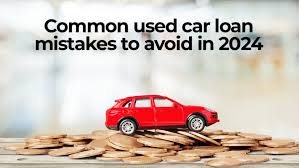When it comes to car insurance, your driving record plays a significant role in determining both the eligibility and the rates you’ll be offered. For those with a history of accidents, violations, or other traffic offenses, securing affordable car insurance can be a challenge. If you have a poor driving record, insurance companies may classify you as a high-risk driver. This designation often leads to higher premiums and limited options for coverage. Understanding how your driving history affects your eligibility for high-risk car insurance can help you navigate the insurance process and make informed decisions about your coverage.
What is High-Risk Car Insurance?
High-risk car insurance is a category of coverage specifically designed for drivers who present a greater risk to insurers. These drivers typically have a history of traffic violations, accidents, or other factors that suggest a higher likelihood of filing an insurance claim. Insurers may raise premiums, impose restrictions, or even refuse to provide coverage to individuals who fall into this category.
Common factors that can place a driver in the high-risk category include:
- Accidents: If you’ve been involved in multiple accidents, especially if you were at fault, insurance companies may see you as a higher risk.
- Traffic Violations: Serious violations, such as speeding tickets, running red lights, or driving under the influence (DUI), can significantly impact your driving record and lead to higher rates.
- Poor Driving History: If you’ve had several traffic offenses over a short period of time, this may signal to insurers that you are more likely to cause accidents in the future.
For these high-risk drivers, finding affordable insurance can be challenging. However, high-risk auto insurance policies are available for those who need coverage but struggle to qualify for traditional plans. These policies are offered by specialized providers, and while they are often more expensive, they are essential for drivers who need to stay insured.
How Your Driving Record Affects Your Eligibility for High-Risk Car Insurance
Your driving history is the primary factor that influences your eligibility for high-risk car insurance. Here’s how various aspects of your driving record can affect your coverage:
1. Accidents and At-Fault Collisions
One of the most significant contributors to high-risk status is a history of accidents, particularly those where you are at fault. Insurance companies use these incidents to assess the likelihood of future claims. If you’ve had multiple accidents in the past few years, insurers will consider you a higher risk and may either deny coverage or offer it at a much higher premium. The more recent the accidents, the more likely they are to influence your eligibility and rates.
2. Traffic Violations
A poor history of traffic violations can raise red flags for insurers. This includes speeding tickets, reckless driving charges, failure to yield, or running stop signs. A single serious violation like a DUI or a reckless driving conviction can have a long-lasting effect on your driving record, and by extension, your insurance eligibility. Insurers may raise your premiums significantly or even refuse to offer coverage altogether if your violations suggest that you’re likely to continue breaking traffic laws.
3. Driving Under the Influence (DUI)
A DUI conviction is one of the most severe violations on your driving record. Not only will it dramatically increase your insurance premiums, but it can also make it much harder to find affordable coverage. Many states require drivers with a DUI conviction to carry high-risk insurance for a certain period of time. A DUI conviction can remain on your record for several years, and during this time, you may have to pay significantly higher premiums than drivers with a clean record.
4. License Points and Suspensions
In many states, your driving record accumulates points for each violation or accident. If you accumulate too many points within a certain period, your driver’s license could be suspended. A suspended license can make it almost impossible to find traditional car insurance. In such cases, drivers are often forced to rely on high-risk insurance providers until they can restore their driving privileges and clean up their records.
Finding Affordable High-Risk Car Insurance
While high-risk insurance can be more expensive than standard car insurance, there are steps you can take to lower your premiums:
1. Shop Around
Not all insurers view high-risk drivers the same way. While one company may impose extremely high rates, another might offer more affordable coverage. It’s important to get quotes from multiple providers to ensure you’re getting the best deal possible.
2. Complete a Defensive Driving Course
Some insurers offer discounts to drivers who complete a defensive driving course. By taking this course, you show the insurer that you’re committed to improving your driving habits and reducing the likelihood of future accidents. This can potentially lower your premiums and make it easier to secure coverage.
3. Increase Your Deductible
If you’re comfortable with higher out-of-pocket expenses in the event of a claim, you can lower your premiums by increasing your deductible. This can make high-risk car insurance more affordable by shifting some of the financial responsibility to you.
4. Maintain a Clean Driving Record
The best way to reduce your high-risk status is to avoid further violations and accidents. By driving safely and avoiding traffic tickets or accidents, you can gradually improve your record and reduce your premiums over time. After a few years of clean driving, you may qualify for standard car insurance again, with significantly lower rates.
Conclusion
Your driving record is the key factor in determining your eligibility for high-risk car insurance. Accidents, traffic violations, DUIs, and a history of poor driving can all increase your chances of being classified as a high-risk driver. While high-risk insurance policies are available to help you maintain coverage, they often come at a higher price. By shopping around, completing driving courses, increasing your deductible, and maintaining a clean driving record, you can reduce your premiums over time and regain access to more affordable coverage.
